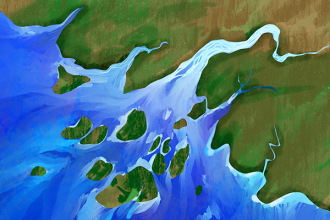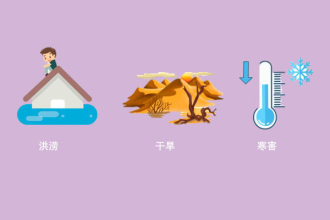
|
20世纪后期,荒野大面积消失科普中国—科技前沿大师谈 2016-10-07 |

研究人员在《当代生物学》期刊上发表的研究报告称,过去20年里,世界各地的荒野地区出现了灾难性的下降。他们证实,这种惊人的损失包括20世纪90年代以来全球荒野面积的十分之一,是阿拉斯加面积的两倍,以及亚马逊一半的面积。亚马逊和中部非洲遭受的打击最大。
研究人员说,这项研究结果强调,迫切需要制定国际政策,认识到荒野地区价值,并解决它们面临的前所未有的威胁。
“全球重要的荒野地区,尽管它们是濒临绝种的生物多样性的据点,是当地气候的缓冲和调节器,而且是世界上许多政治和经济上被边缘化的群体(原始部落)的栖息地,但是在环境政策中完全被忽视了,” 澳大利亚昆士兰大学和纽约野生动物保护协会的詹姆士·沃森博士说。“没有任何政策保护这些地区,它们沦为世界发展的牺牲品。我们可能会有10到20年的时间来扭转这一局面。国际政策机制必须认识到,在还没有为时过晚之前,要保护荒野地区,采取行动极为必要。我们可能只有10到20年的时间来扭转这种情况。”
沃森说,许多政策的关注点都放在物种的丧失上,对于整个生态系统的大规模损失几乎没有人注意,尤其是荒野地区的研究相对较少。为了填补这一空白,研究人员绘制了全球荒野地区的地图,“荒野”被定义为生物和生态上的区域性景观,没有人类干扰的地区。然后,研究人员将他们最新绘制的地区与20世纪90年代初用同样方法绘制的地图进行了比较。
比较结果表明,共3010万平方公里(约占世界陆地面积的20%)现在仍然是荒野,大多数位于北美洲,亚洲北部,北非和澳大利亚大陆。但是,这两个地图之间的比较显示,在这几年,估计330万平方公里(近10%)的荒野地区已经消失了。这些损失主要发生在南美洲,下降了30%,以及非洲损失了14%。

“在短短二十年时间里,荒野的损失面积是惊人的”,北英属哥伦比亚大学的奥斯卡 文特尔博士说。“我们需要了解荒野地区的重要性,要知道它们在世界上正在大幅减少,否则我们会愚蠢地认为,对荒野地区的保护是由于其地处偏远。如果没有积极的全球干预措施,我们可能会失去大自然王冠上的最后一颗宝石。一旦它消失了,你不能恢复荒野,支撑这些生态系统的生态过程也随之消失,它永远不会回到它过去的状态。我们目前所能做的唯一的选择就是主动保护”。
沃森说,联合国以及其它国家和组织在主要的多边环境协议中,忽视了全球重要的荒野地区,这种情况必须改变。
“如果我们不迅速采取行动,地球上将仅仅残留极小面积的荒野地区,这对于保护、气候变化,对于地球上的原始部落都是灾难,”沃森说。“我们有责任为我们的孩子和他们的后代采取行动。”
“英文原文”
A tenth of the world's wilderness lost since the 1990s, study finds
Researchers reporting in the journal Current Biology show catastrophic declines in wilderness areas around the world over the last 20 years. They demonstrate alarming losses comprising a tenth of global wilderness since the 1990s - an area twice the size of Alaska and half the size of the Amazon. The Amazon and Central Africa have been hardest hit.
The findings underscore an immediate need for international policies to recognize the value of wilderness areas and to address the unprecedented threats they face, the researchers say.
"Globally important wilderness areas—despite being strongholds for endangered biodiversity, for buffering and regulating local climates, and for supporting many of the world's most politically and economically marginalized communities—are completely ignored in environmental policy," says Dr James Watson of the University of Queensland in Australia and the Wildlife Conservation Society in New York. "Without any policies to protect these areas, they are falling victim to widespread development. We probably have one to two decades to turn this around. International policy mechanisms must recognize the actions needed to maintain wilderness areas before it is too late. We probably have one to two decades to turn this around."
Watson says much policy attention has been paid to the loss of species, but comparatively little was known about larger-scale losses of entire ecosystems, especially wilderness areas which tend to be relatively understudied. To fill that gap, the researchers mapped wilderness areas around the globe, with "wilderness" being defined as biologically and ecologically intact landscapes free of any significant human disturbance. The researchers then compared their current map of wilderness to one produced by the same methods in the early 1990s.
This comparison showed that a total of 30.1 million km2 (around 20 percent of the world's land area) now remains as wilderness, with the majority being located in North America, North Asia, North Africa, and the Australian continent. However, comparisons between the two maps show that an estimated 3.3 million km2 (almost 10 percent) of wilderness area has been lost in the intervening years. Those losses have occurred primarily in South America, which has experienced a 30 percent decline in wilderness, and Africa, which has experienced a 14 percent loss.
"The amount of wilderness loss in just two decades is staggering" Dr Oscar Venter of the University of Northern British Colombia. "We need to recognize that wilderness areas, which we've foolishly considered to be de-facto protected due to their remoteness, is actually being dramatically lost around the world. Without proactive global interventions we could lose the last jewels in nature's crown. You cannot restore wilderness, once it is gone, and the ecological process that underpin these ecosystems are gone, and it never comes back to the state it was. The only option is to proactively protect what is left".
Watson says that the United Nations and others have ignored globally significant wilderness areas in key multilateral environmental agreements and this must change.
"If we don't act soon, there will only be tiny remnants of wilderness around the planet, and this is a disaster for conservation, for climate change, and for some of the most vulnerable human communities on the planet," Watson says. "We have a duty to act for our children and their children."
责任编辑:lijia
上一篇:海洋科学家为何要探秘深渊
下一篇:美重构过去200万年地球表面气候
 科普中国APP
科普中国APP
 科普中国微信
科普中国微信
 科普中国微博
科普中国微博

最新文章
-
为何太阳系所有行星都在同一平面上旋转?
新浪科技 2021-09-29
-
我国学者揭示早期宇宙星际间重元素起源之谜
中国科学报 2021-09-29
-
比“胖五”更能扛!我国新一代载人运载火箭要来了
科技日报 2021-09-29
-
5G演进已开始,6G研究正进行
光明日报 2021-09-28
-
“早期暗能量”或让宇宙年轻10亿岁
科技日报 2021-09-28
-
5G、大数据、人工智能,看看现代交通的创新元素
新华网 2021-09-28













